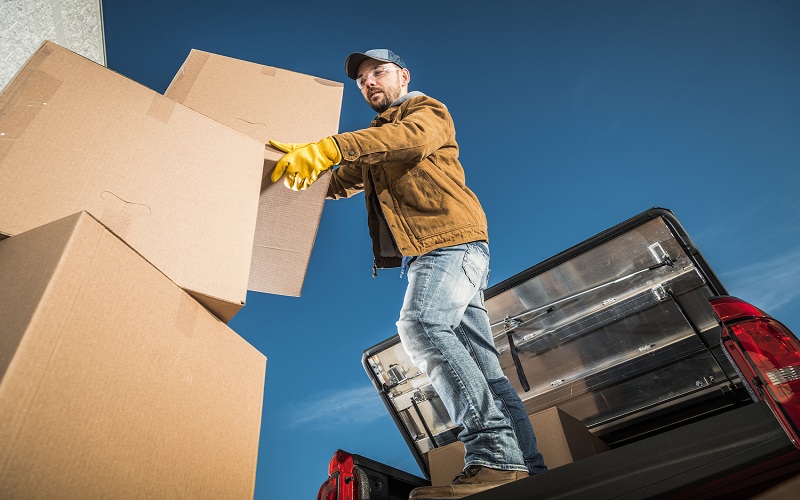I’m willing to bet you have at least some experience with open-carrying cargo. Maybe you’ve had the pleasure of strapping a mattress to the roof of your sedan after buying a used bed at a garage sale. Or perhaps you’ve carried a canoe in the back of a pickup truck. Either way, do you know the #1 enemy when open-carrying cargo?
That enemy is moving air. It is capable of picking up the heaviest loads and sending them flying. Strangely, my own experience tells me people do not think much about moving air when loading open vehicles like trailers and pickup trucks. It never dawns on them that the way they are packing just invites the enemy to do its dirty work.
The Mattress on a Car
An easy illustration of the moving air problem is attempting to carry a mattress on the top of a car. We have all seen it. Maybe you have done it. You threw a mattress up top, tied it down with one rope running front-to-back and a second running side-to-side. Then you confidently declared, “It will be fine. It’s just a short ride.”
Such an arrangement is almost guaranteed to be unsafe. While a car is at rest, two pieces of flimsy rope are more than enough to keep a mattress in place. A moving car creates an entirely different scenario. As a car moves down the road, moving air hits the mattress and picks it up like a sail. If it is not properly secured, even the cousin coefficient – multiple hands sticking out the windows to hold the mattress down – will not help.
The Canoe in a Pickup Truck
Carrying a mattress on top of a sedan offers a pretty good illustration of why moving air is a problem for open-carrying cargo. Less obvious is a scenario involving something like a canoe and a pickup truck.
Just like moving air can pick a mattress up like a sail, it can do the same thing with a canoe. That’s why, if the canoe is longer than the bed of the truck, you don’t lean one end of the canoe against the truck’s cab. Instead, you either let the canoe hang off the back of the tailgate or you get a truck bed extender.
I have witnessed people carrying canoes with one end resting on top of the cab. I have also seen some of those canoes take flight because their owners didn’t feel it necessary to tie them down. It doesn’t take much. A little moving air will send an improperly secured canoe flying.
Tie-Downs and Anchor Points
The good news in all of this is that moving air does not have to win the battle. It may be the #1 enemy when open-carrying cargo, but it is an enemy that can be tamed with enough tie-downs and anchor points.
Typical tie-downs include ropes, cam straps, and ratchet straps. I prefer Rollercam cam straps because they are simple to use and don’t require a ton of force to secure things tightly. Incidentally, I would never use bungee cords or rubber ropes. They are too unreliable and do not offer enough holding power.
The key to conquering moving air is applying enough tie-down straps affixed to solid anchor points. Here is my rule of thumb: you can never have too many tie-downs. I would rather over secure then under secure.
If you have any plans to open-carry cargo, remember that your #1 enemy is moving air. Do not underestimate its ability to pick up your cargo and send it flying through the sky like Peter Pan over London

